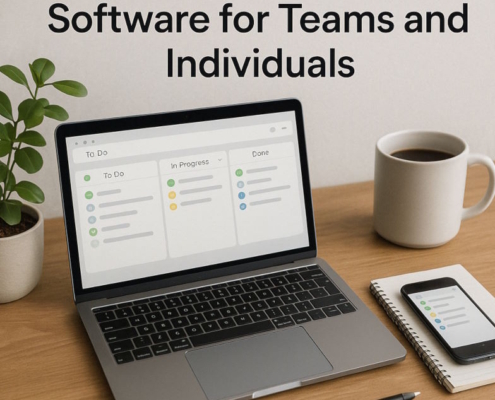Introduction
Co-authored by media journalist Nell Scovell and business leader Sheryl Sandberg, Lean In: Women, Work, & the Will to Lead is a book published in 2013 that empowers women to take charge at home and at work.
Overview of Lean In, organized chapter-wise
The 11 chapters of Lean In can be summarized as follows:
- The Ambition Gap in Leadership: If You Were Not Afraid, How Would You Act? – Judith Rodin asks why exceptionally gifted women decide to give up their careers and stay in their homes to raise their children through anecdotes, while Gayle Tzemach Lemmon believes that women’s aspiration is seen negatively when it is seen positively in men.
- Have a seat around the table: Stories are shared concerning Peggy McIntosh, who says that women experience pressure to reject praises for their achievements; Padmasree Warrior, who says individuals should take chances regardless of whether they don’t feel capable of completing them; and Ginni Rometty, who talks about taking chances and even risking failure. The idea of “play it until you achieve it” and the hypothesis that women exhibit impostor syndrome worries more often than men are also covered.
- Likability and Success: Two resumes demonstrating corporate success are shown to different people in a sociological experiment that is summarized. With one naming a female employment applicant and the second one mentioning a male applicant, both resumes are exactly the same.
A majority of the time, people were concerned about the female applicant’s success while they regarded the male applicant’s accomplishment to be desirable. Mary Sue Coleman mentions in anecdotes that businesswomen are frequently “relentlessly pleasant” during negotiations, while Arianna Huffington admits that she needed to take plenty of flak.
- Hardly a ladder, but a jungle gymnasium: A reexamination of the idea of the “business ladder” suggests that accomplishment is more akin to a jungle gymnasium with several routes leading to the peak. Stories are shared regarding the way Eric Schmidt advised taking positions in developing industries where there was room for growth, regardless of whether they were less esteemed than traditional occupations. There are also stories regarding the way Lawrence Summers initially treated the author poorly but later showed her greater respect once she spoke up for herself.
- Do You Serve as My Mentor? – It is advised that although working professionals require mentors, teachers, and students cannot be coerced into a relationship. There is a story of Clara Shih who was respectful of her mentors’ schedules and would often ask thoughtful questions in the business world.
- Find Your Truth and Tell It – The author claims that during her time as a senior staff member at Facebook, she and other members worked to create a workplace with no hierarchy where everybody is allowed to voice their opinions and critiques. There are anecdotes regarding the way Howard Schultz was transparent about his feelings and the way Robert Rubin prefers to get counsel from those with new viewpoints to those with extensive expertise in an established culture.
- Keep going till you’re done: According to the author, she has witnessed women put family above work progress, but she believes that it is going overboard for certain women. Peggy Orenstein found, through anecdotes, that many young girls envisage forgoing career choices in favor of raising families. The author continues by stating that she frequently asks about child-bearing intentions from females of a particular age while working as a promotion and hiring manager. She goes on to say that she is not in breach of any laws against prejudice against females who must take leave from employment in order to bear children; rather, she wants to ensure that workers feel free to continue in their roles even after they become parents.
- Make sure your partner is a true one: The idea of a “chosen parent,” who is typically a woman, is examined by the author. This individual is meant to handle the majority of the caregiving. According to statistics that she studies, just one of the twenty-eight women who lead the Fortune 500 businesses never got married. One source for data about the advancement of women is The Feminine Mystique by Betty Friedan. Sandberg talks about how her husband Dave Goldberg has structured their marriage according to the divided earning/shared parenthood model.
- The Fallacy of Doing Everything: In a story, Tina Fey claims that the most impolite question many ask a woman is “In what ways do you manage it all?” That’s because individuals assume that a successful woman with a company doesn’t have time for her family, a concern that is not posed to successful men in the industry. Anecdotal evidence regarding Laurie Glimcher shows how she is honest about her limitations and acknowledges that she can’t do it all.
- Let’s get started discussing it: The writer shares a painful tale about how, when working as a parliamentary page, she received a sarcastic tap on her head from Tip O’Neill, who inquired as to whether she had ever been a “pom-pom girl,” someone who cheered for male jobs. One CEO who tries to protect women from discrimination at work is Kenneth Chenault.
- Collaborating for Equality: In her account of Marissa Mayer’s acceptance of the Yahoo CEO position during 3rd trimester of her pregnancy, the author notes that women are subjected to more scrutiny in their jobs. According to her, there must not be any conflict between these two categories because stay-at-house moms often denigrate women who have successful careers.
Criticism and Reviews
Numerous analysts have evaluated Lean In. The work and its affiliated corporation LeanIn.org were the subject of a piece published in 2013 (July) in the art & criticism publication The Baffler. Susan Faludi contends in the piece that Sandberg’s idea of empowering females in work environments is in fact a corporate-sponsored effort; in order to promote women as “consumer objects[s]” for career advancement, she discourages female solidarity and minimizes the effects of widespread gender discrimination in the work environment.
The selection standards that LeanIn.org uses for its business “Platform Partners” are also questioned in the piece. A large number of such “Platform Partners” are dealing with “recent or ongoing complaints with the Equal Employment Opportunity Commission (EEOC), as well as federal and state court cases concerning pregnancy discrimination, sex discrimination, partial promotion practices, wrongful dismissals, and gender-specific retaliation targeting female employees.”
Lean In has been described in The Guardian by Zoe Williams as “an infantilizing, retrograde guide for aspiring women.” She draws attention to Sandberg’s inconsistent stance in denouncing and defending sexist policies at work.
“So you may have everything” is something they remind women about in Lean In. Michelle Obama made reference to it during her 2018 Becoming book tour. Not simultaneously, sorry. That is untrue. And since that shit isn’t always effective, leaning in isn’t always sufficient.
Intersectionality: sexual identity, class, and race
A critical examination of the work titled “Dig Deep: Beyond Lean In” was written by writer Bell Hooks. In a supposedly feminist pack, Hooks characterizes Sandberg’s viewpoint as “faux feminist” as well as characterizes her views on equality for women in work as acceptable to those in positions of authority in society—rich white men, in particular. Hooks states, “[Sandberg] pertains as a sweet young sister who simply wishes to get involved on the bigger brother’s side.”
According to Hooks, Sandberg and the media both promote the idea that a determined woman can reach the top of the business ladder. Additionally, the paper makes the case that Lean In fails to acknowledge “the actual systemic challenges most women confront inside the workplace.” Hooks argues that the “Lean In” campaign’s goal is to give women guidance on how to succeed in the current environment, not to encourage social change. Additionally, she claims that Lean In successfully ignores the facts of intersectionality, a topic that has gained popularity in the modern feminist lobby.
The primary topics covered in Hooks’ piece, including sexuality, race, and class, are taken from her book Feminism Is For Everyone. Hooks explains in the book that women weren’t made equal and that they do not all have the same identity. According to Hooks, affluent white women are aware of their standing in comparison to black women and colored women (page 10); progressive white women having privilege in society aspire to the liberty that they observe men in their socioeconomic strata having (page 38); & heterosexual women are more appealing to men & society.
Sandberg believed that if females rose to positions of leadership, then all women would benefit, as Kathleen Geier explained in her article “Does Feminism Have a Class Problem?” In reaction to this presumption, Geier stated: “It is unlikely that ‘trickle-down’ feminists in the vein of Sandberg will help the people more significantly than the financial equivalent has. Several left-leaning feminists were worried by her excitement for capitalism & her support of a depoliticized approach that prioritized individual growth over group action.
According to Geier, enacting policies like paid family & sick leave, universal daycare, and a limit on hours of work akin to those in Europe would be popular with women from all socioeconomic backgrounds. Collective advocacy serves as the sole sustainable and successful means to achieve economic equality.
In the same piece for The Nation, novelist and senior researcher at the Center for American Progress Judith Warner agrees with Geier that the emphasis of feminism should be on systemic issues rather than personal adjustment. Without losing sight of the distinctions that define them based on class, ethnicity, education, and level of empowerment, women must discover shared experiences. In addition, Warner argues that promoting genuine flexibility at work is one of the best ways to advance gender equality.
Demos President Heather McGhee is the 3rd contributor to this piece published in The Nation. She argues that if a woman becomes a CEO, her business model—which depends on suppressed earnings for individuals at the lowest rung of society’s political and social hierarchies—won’t be feminist because these groups include women, immigrants, colored people, and the impoverished. McGhee cites data from Demos that indicates that the disparity in gender pay in retail costs women roughly $40.8 billion in missed wages per year, which will increase to $381 billion collectively by 2022. McGhee promotes the idea that females should concentrate on closing the pay inequality.
Professor Nancy Folbre of the University of Massachusetts Amherst, alongside Kathleen Geier, Heather McGhee, and Judith Warner talked about intersectionality and Lean In in the piece. Folbre provided an example of intersectionality by saying, “There isn’t a traffic signal, it’s a multi-way intersection, and individuals frequently have no idea which direction to turn.” Certain individuals who drive opulent SUVs are going to be completely safe.
Others who are walking could get injured. One significant means of expressing a group’s identity is gender. Likewise, citizenship, race, class, and ethnicity are.” Folbre goes on to explain that because Lean In focused solely on gender inequity, it validates intersectional analysis. Furthermore, the book primarily targets females who are looking to grow in their professions rather than individuals who are having difficulty landing and maintaining steady employment.
According to Susan Faludi, the criticism of Lean In is misguided and unfair. Faludi clarifies that opponents of Lean In are unable to counter Sandberg’s wealth and home’s square footage (which are $1 billion & 9,200, correspondingly). Faludi states that the “Lean In” movement has an issue because it excludes single moms: “Lean In provides a false freedom for single moms, as they were unable to ‘lean in’ whatever they wished.”
Faludi argues in the piece that empowering women of wealth to achieve their own social advancement is insufficient to improve the conditions of single moms. This position aligns with modern feminists who advocate for societal and cultural transformation to validate “mothering” (which includes single moms) as an uplifting rather than repressive endeavor.
Published by OR Books in 2015, Elissa Shevinsky’s edited book Lean Out: The Struggle for Gender Equality in Tech and Start-up Culture featured several articles that highlight the significant obstacles facing women in the tech industry. These essays relate to a range of experiences and highlight the aforementioned concerns.
LeanIn.org
In reaction to the success of Lean In, Sandberg established the nonprofit LeanIn.org (commonly referred to as the Lean In Foundation) the same year when it was released. Its mission is “to offer women continuous motivation and encouragement they need that will assist them to accomplish their goals.” Courses and instructional materials supporting female leadership are provided by the organization.






























